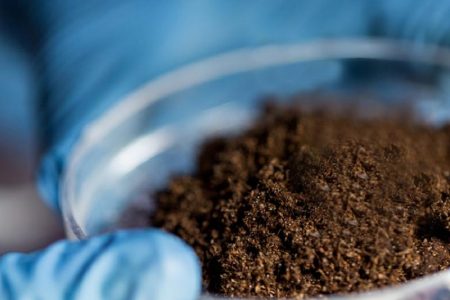August 3, 2018 – Carbon on Earth is pretty much a finite element. When the Earth formed the carbon that was part of it has seldom changed in volume. The exceptions have come from carbon raining down from space in the form of occasional carbonaceous meteorites.
Carbon has over Earth’s history been sequestered throughout the planet whether tied up in limestone (calcium carbonate) sedimentary rocks, or carbon trapping sediments, living biomass (plants from grasses to forests, moss and lichens, animals, and microbiota), fossil fuels (coal, oil, natural gas), oceans and lakes, and soil. The remaining carbon has been in the air where it appears as carbon dioxide (CO2) and methane (CH4).
The largest carbon sink is the ocean, followed by those based on land – the forests, grasslands, permafrost zones, peat bogs, and soil.
Modern human civilization has exploited buried carbon in abundance over the last century-and-a-half. We have mined the coal. We have drilled for oil and natural gas. We have harvested peat. We have cut down trees, plowed under grasslands, and turned over the soil. In doing all these things we have taken sequestered carbon and introduced it to the atmosphere. We have done all this without the intention of changing the environment. But nonetheless, that’s what we have done.
In terms of soil as an agent of sequestration, we thought this medium was pretty stable in trapping carbon. After all, the plants growing in the soil used the carbon while alive and returned the carbon to the soil when dead. So wouldn’t that mean soil was largely a carbon sequestration agent that remained largely in balance.
So we thought. But now a new study in the journal Nature entitled “Globally rising soil heterotrophic respiration over recent decades,” describes that there is no carbon balance, and the soils of the planet are leaking more CO2 than what they can sequester. And the reason why, state the authors, is human activity.
The research done by soil scientists at Pacific Northwest National Laboratory, University of Maryland-College Park, Virginia Commonwealth University, and the University of Delaware notes that the soils of the planet contain as much carbon as Earth’s atmosphere. They describe how the carbon cycle works within soil and a phenomenon called soil respiration.
What is it?
Soil respiration doesn’t mean that our soil breathes. It doesn’t. But the microbiology resident in it does. And currently, based on global observations, it appears that the planet’s soils are outgassing more CO2 than what can be retained.
How do we know this to be the case?
The research done by the authors of this new study used the combined databases of the Pacific Northwest National Laboratory, the Global Soil Respiration Database located at University of Maryland, and FLUXNET, a global network of more than 500 micrometeorological towers around the world. From the data collected which gave them detailed information on soil, precipitation, and weather from more than 2,000 global sites, they were able to paint of soil respiration that shows it has increased by 1.2% between 1990 and 2014. They concluded that the cause of this phenomenon was increased microbial activity releasing more CO2. And although 1.2% doesn’t sound like much, on a global scale the researchers state it represents a “massive” ecosystem shift in a 25-year window.
Ben Bond-Lamberty, who is lead author of the study was quoted this week in an article written by Brandon Spector, for Live Science, stating, “soils around the globe are responding to a warming climate, which in turn can convert more carbon into carbon dioxide which enters the atmosphere.”
In other words, this is a self-intensifying loop where a warming atmosphere leads to greater microbial activity in the soil which in return releases more greenhouse gas emissions (CO2) which furthers atmospheric warming, which then increases microbial activity even further, and so on.
And although we know what is needed, to decrease global greenhouse gas emissions and eventually eliminate the burning of carbon to support our modern civilization, we humans continue to sleepwalk towards the solution.









